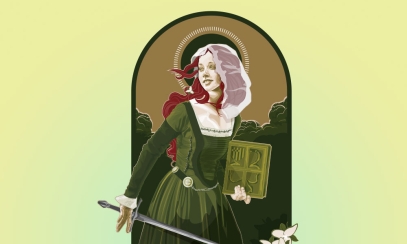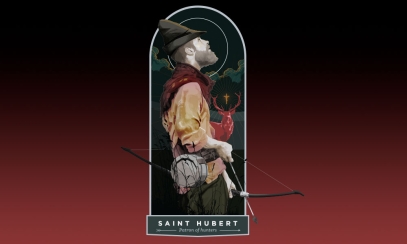The Saints of Summer
The long, hazy days of summer may be “ordinary” time in the Church year, but the liturgical calendar for July and August reads like an All-Star line-up of the saints, including some heavy hitters like Mary Magdalene, Benedict, and Maximillian Kolbe. Here’s a look at some of the key players on this heavenly roster.
The Rules of the Game: St. Benedict (July 11) is called the Father of Western Monasticism. He tried living as a hermit, but his great piety attracted many followers and he soon had a colony of monks who wanted him to be their abbot. To guide his followers, he wrote what is now called “The Rule of St. Benedict,” which became the standard for all monastic life in the Western Church. His motto—a good one for us all—was “Ora et labora,” or “pray and work.”
Who’s on First?: St. Mary Magdalene (July 22) has the distinction of being the first person to announce the resurrection and the first person to proclaim the Good News to the rest of the apostles. Despite her bad reputation—contrary to popular belief, she was NOT a prostitute—she also has the honor of being named first among the women who followed Jesus.
Get Yer Red-Hots!: St Lawrence (Aug. 10) was a deacon in the early Church with a sense of humor that was not appreciated by the Romans. When Roman officials demanded that Lawrence turn over the Church treasures with which he was entrusted, he asked for time to gather the wealth. Rome was not amused when the “riches” of the Church gathered by Lawrence turned out to be beggars, cripples, the poor and the old to whom Lawrence had already given the physical riches he had.
As punishment, Lawrence was burned to death on a gridiron. Determined to have the last word, the saint is reported to have told his torturers, “You can turn me over now. I’m done on this side.”
Pinch-Hitter for Christ: St. Maximilian Kolbe (Aug. 14) is the perfect example of what it means to “lay down one’s life for a friend.” This Franciscan priest from Poland was arrested in 1941 and sent to the concentration camp at Auschwitz. When nine men were sentenced to die in retaliation for the escape of another prisoner, Maximilian volunteered to take the place of a married man with a family. He stepped up to the plate and took the pitch meant for the other man—death by starvation and lethal injection. Pope John Paul II canonized him as a martyr in 1982.



